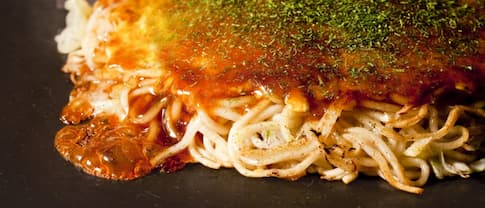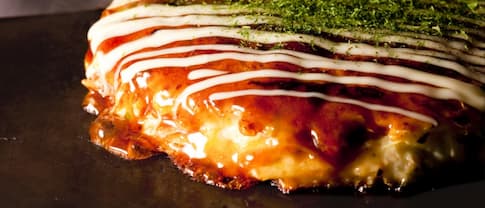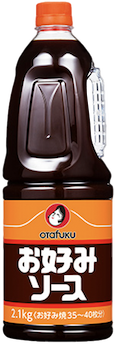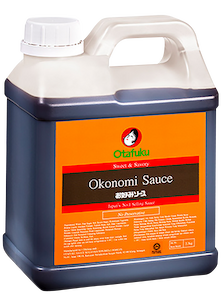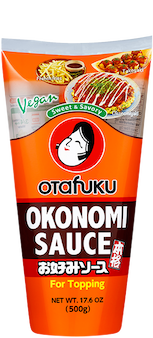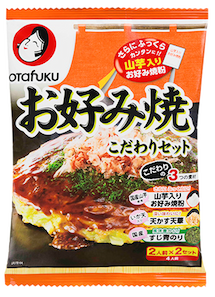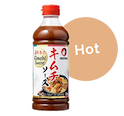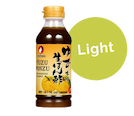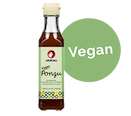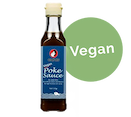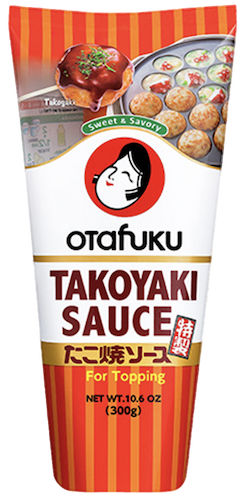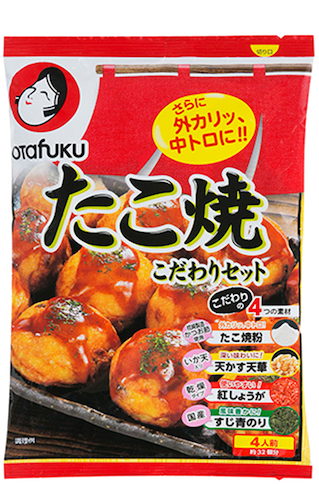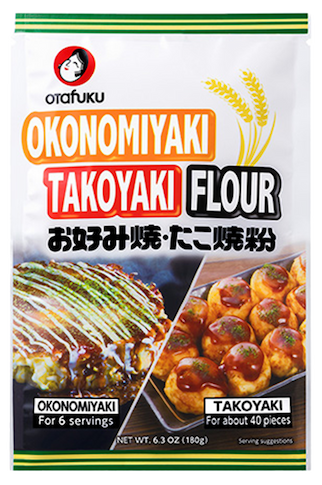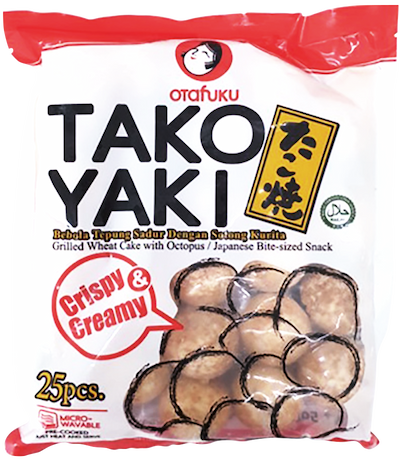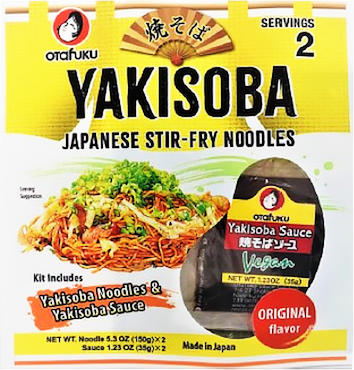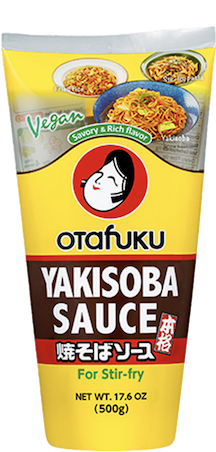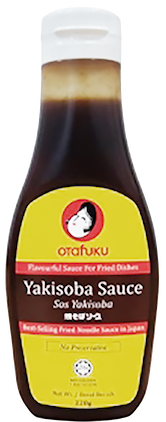- TOP
- Culture
Culture
Okonomiyaki, Takoyaki and Yakisoba are even more enjoyable with delicious sauce.
Here, we look into why our sauce is loved all over the world!

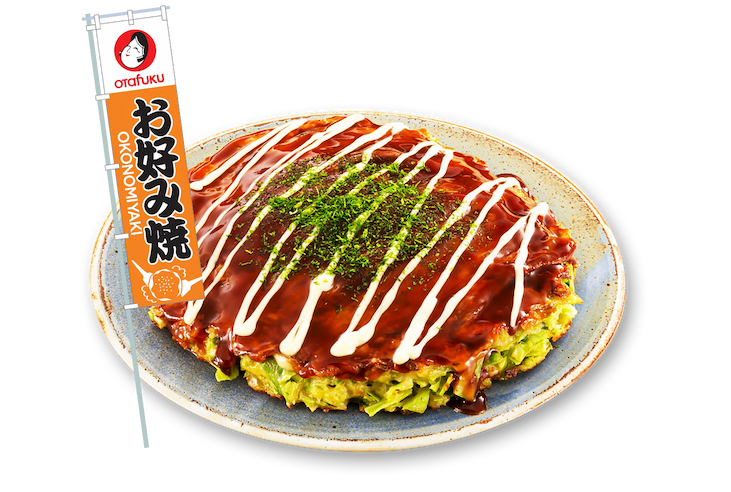
OKONOMIYAKI
Okonomiyaki is such a popular local dish that 90% of Japanese people say they like it. It packs plenty of vegetables for well-balanced nutrition and a healthy meal. Okonomiyaki is also popular because it’s easy to make and anyone can add their favorite (okonomi) ingredients, making it fun for everyone. (Source: 2018 survey in Japan by Otafuku)
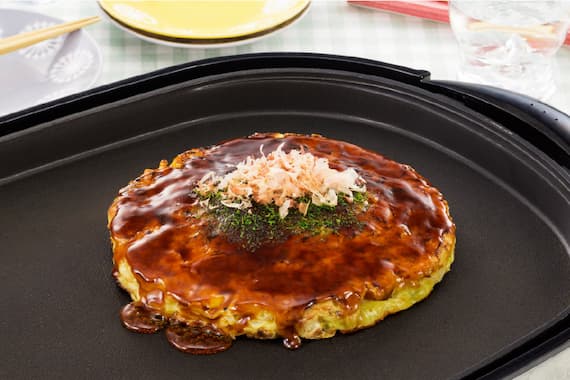
A Classic Japanese Dish which Brings People Together
In Japan, Okonomiyaki is a go-to meal for family or large groups of friends to eat and enjoy together. As well as being cooked at home, there are many restaurants in Japan specializing in Okonomiyaki, including Somewhere customers grill their Okonomiyaki by themselves to their taste. Recently, it has also become available as a quick and easy fresh side dish or frozen item at convenience stores and supermarkets.

The History of Okonomiyaki
Okonomiyaki was created to satisfy people’s hunger amid post-war food shortages by adding easily-available ingredients to Issen Yoshoku, a flour pancake snack for children at the time. From the mid-1950s to the mid-60s, a wide range of ingredients came to be used across different regions and restaurants, gaining strong popularity from all walks of life as a dish that satisfies adult palates.

Otafuku Meets OKONOMIYAKI
The popularity of Okonomiyaki started to grow after the war. At first, Worcestershire sauce was used in cooking Okonomiyaki. In response to the concerns of Okonomiyaki restaurants that the runny Worcestershire sauce flows right off the grill plate, we started to develop a sauce specifically for Okonomiyaki. After extensive trial and error in partnership with Okonomiyaki restaurants, we finally created our special Okonomi Sauce in 1952. Otafuku Okonomi Sauce is a mellow sauce that blends around 20 kinds of spices with plenty of fruits and vegetables, and features the rich sweetness of a special ingredient: dates. We are proud that our sauce currently has a market share in Japan of over 80% in the home Okonomi Sauce category. We are also laying the groundwork so that people not only in Japan but all over the world will fall in love with Okonomiyaki.
The Two Great OKONOMIYAKI Styles!
The Differences between Hiroshima and Osaka Style
Hiroshima Style
Hiroshima style is characterized by making multiple layers of various ingredients.
Ingredients
-

Dried Seaweed
Close
Dried Seaweed
This type of seaweed, referred to as aonori, is highly nutritious and especially rich in magnesium, vitamin B12, and iodine. Domestically sourced and it has an appetizing rich aroma and vibrant color.
-

Okonomi Sauce
Close
Okonomi Sauce
Up to 1/4 of Otafuku’s oil-free Okonomi sauce is made up of vegetables and fruits. It is also blended with 20 spices, such as vinegar and salt.
-

Eggs
Close
Eggs
With a good balance of amino acids and essential nutrients for the human body, eggs are truly marvelous. The protein also serves as a perfect addition for Okonomiyaki due to its high absorption of flavoring when heated.
-

Noodles
Close
Noodles
Nutrients in the form of carbohydrates, gives you the energy you need for both physical and mental activities. Although carbohydrates are said to raise blood sugar levels after a meal, cabbage has the ability to diminish this effect.
-

Pork
Close
Pork
This meat isn’t just a simple protein, but it also contains essential amino acids, such as lysine, that promotes certain human body functions. It is said that it’s important to have at least two sources of amino acids that cannot be produced in the human body. A single dish of Okonomiyaki contains two of those essential amino acids, from both pork and eggs.
-

Bean Sprouts
Close
Bean Sprouts
Bean sprouts are healthy and are rich in nutrients such as calcium, potassium, folic acid, vitamin B1, vitamin C, and aspartic acid.
-

Green Onions
Close
Green Onions
An aromatic ingredient that contains allicin and promotes the absorption of vitamin B1. With the vitamin B1 already in pork, adding green onions further promotes the intake of other sources of vitamin B1 which helps alleviate fatigue.
-

Tempura Crisps
Close
Tempura Crisps
Adding the tempura crisps brings out the umami in the Okonomiyaki. Otafuku’s Tenkasu Tenka(Tempura Crisps) isn’t just wheat flour, it is blended with powdered squid (100% cuttlefish).
-

Cabbage
Close
Cabbage
Cabbage, a standard for the Japanese dinner table, is an essential ingredient when making Okonomiyaki. It contains vitamin C, calcium, and other nutrients; it also brings an overall delicious sweetness and texture to the dish. It also contains vitamin U (S-Methylmethionine), a nutrient that is expected to protect the gastric mucosa and promotes digestion and absorption.
-

Dried Fish Powders
Close
Dried Fish Powders
Another source of protein, Dried Fish Powders can bring umami to the entirety of the batter. Otafuku’s powdered bonito uses a traditional smoking technique to create its unique, aromatic flavor.
-

Batter
Close
Batter
Serving as the base for Okonomiyaki, flour is a carbohydrate that provides the necessary energy for our body needs throughout the day. The Hiroshima Okonomiyaki Ingredient Set contains Okonomiyaki flour mix that spreads easily and will help you create the ideal Hiroshima Okonomiyaki.
How to cook Okonomiyaki
(Hiroshima style)
Osaka Style
Osaka style is characterized by mixing all the ingredients together into the batter.
Ingredients
-

Dried Bonito Flakes
Close
Dried Bonito Flakes
Bonito contains the necessary protein, phosphorus, potassium, and vitamin D that our body cannot produce on its own.
-

Dried Seaweed
Close
Dried Seaweed
This type of seaweed, referred to as aonori, is highly nutritious and especially rich in magnesium, vitamin B12, and iodine. Domestically sourced and it has an appetizing rich aroma and vibrant color.
-

Mayonnaise
Close
Mayonnaise
The main ingredients in mayonnaise are eggs, vegetable oil, vinegar, and salt. Eggs contain vitamins A and D, minerals, and fats; while vinegar is said to be good for the body as well. When applied moderately, it makes Okonomiyaki even more delicious.
-

Okonomi Sauce
Close
Okonomi Sauce
Up to 1/4 of Otafuku’s oil-free Okonomi sauce is made up of vegetables and fruits. It is also blended with 20 spices, such as vinegar and salt.
-

Pork
Close
Pork
This meat isn’t just a simple protein, but it also contains essential amino acids, such as lysine, that promotes certain human body functions. It is said that it’s important to have at least two sources of amino acids that cannot be produced in the human body. A single dish of Okonomiyaki contains two of those essential amino acids, from both pork and eggs.
-

The Mix of Ingredients

-

Eggs
Close
Eggs
With a good balance of amino acids and essential nutrients for the human body, eggs are truly marvelous. The protein also serves as a perfect addition for Okonomiyaki due to its high absorption of flavoring when heated.
-

Flour
Close
Flour
Combining both flour and pork in Okonomiyaki is an efficient method of producing energy for the body. Flour is known to contain sugars, but the vitamin B1 found in pork promotes the metabolism of the sugars and converts them into energy.
-

Cabbage
Close
Cabbage
Cabbage, a standard for the Japanese dinner table, is an essential ingredient when making Okonomiyaki. It contains vitamin C, calcium, and other nutrients; it also brings an overall delicious sweetness and texture to the dish. It also contains vitamin U (S-Methylmethionine), a nutrient that is expected to protect the gastric mucosa and promotes digestion and absorption.
-

Green Onions
Close
Green Onions
An aromatic ingredient that contains allicin and promotes the absorption of vitamin B1. With the vitamin B1 already in pork, adding green onions further promotes the intake of other sources of vitamin B1 which helps alleviate fatigue.
-

Tempura Crisps
Close
Tempura Crisps
Adding the tempura crisps brings out the umami in the Okonomiyaki. Otafuku’s Tenkasu Tenka(Tempura Crisps) isn’t just wheat flour, it is blended with powdered squid (100% cuttlefish).
-

Pickled Red Ginger
Close
Pickled Red Ginger
Ginger, known for its pungency, is a healthy ingredient full of beneficial compounds. Zingerone for example, promotes blood circulation in the body, while another compound, shogaol, strengthens the body’s immune system. To finish it off, the fragrant cineole compound is shown to increase appetite.
How to cook Okonomiyaki
(Osaka style)
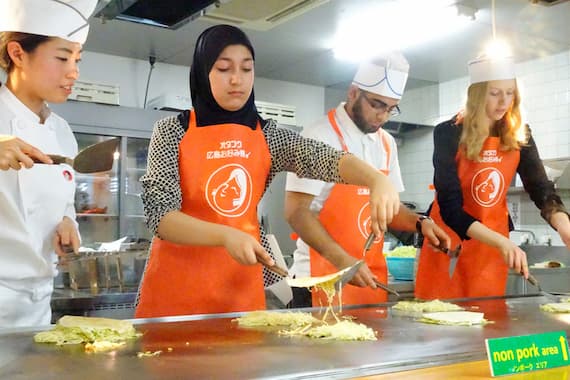
Borderless Food
Okonomiyaki can be made with whatever ingredients are readily available, wherever you are in the world. Okonomiyaki can be eaten by anyone regardless of nationality, religion, age, or gender - it is a genuinely borderless food.

A Tasty Way to Clean Up Leftovers
Okonomiyaki can help reduce food waste. In our search for ways to reduce food waste in attainable and tasty ways, we found an idea in Japanese “mottainai” culture. It was the recipe for Okonomiyaki. Okonomiyaki is easy to make and delicious. It can be made with all kinds of ingredients and we are confident it can help reduce food waste.


TAKOYAKI
Takoyaki is an octopus ball that is grilled in a flour-based batter and topped with sauce and dried bonito flakes. Once you taste it, you will definitely want more.
In the past, Takoyaki was mainly popular in Osaka, but these days it is well loved throughout all of Japan.
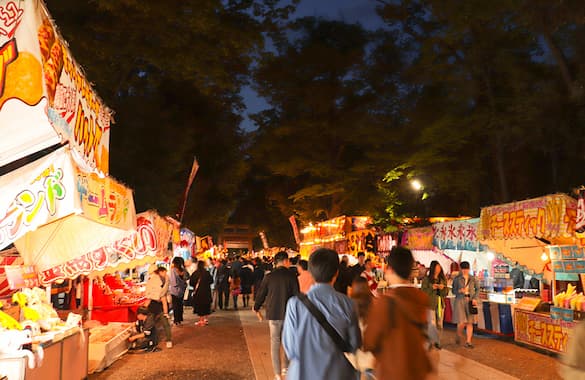
Tastes Enjoyed at Festival Food Stalls
Takoyaki is an iconic food at Japanese festivals. Takoyaki stalls and restaurants are ever-present at festivals all over Japan. Also, many families in Japan have Takoyaki makers at home, creating their own special combinations of toppings, ingredients, and flavorings, enjoying coming together with friends and family through Takoyaki parties. Quick and easy frozen Takoyaki are also available at supermarkets and convenience stores.
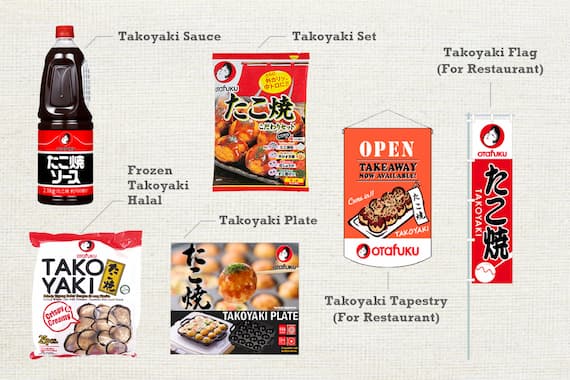
Otafuku Meets TAKOYAKI
At Otafuku, we started producing and selling Takoyaki sauce in 1964.
Development was sparked by feedback from a Takoyaki shop, which said “Just like there is okonomi sauce only for okonomiyaki, I want a special sauce just for Takoyaki.” To develop a sauce that matches perfectly with Takoyaki, we paid careful attention to its thickness and color, eventually creating the definitive Takoyaki sauce.
Our Takoyaki sauce has been loved for over 50 years, and even now we are continuing to help more and more people enjoy the ultimate Takoyaki experience.
How to Cook TAKOYAKI

Takoyaki
How to Enjoy TAKOYAKI
Enjoy changing up the toppings
Fun with toppings other than tako (octopus).
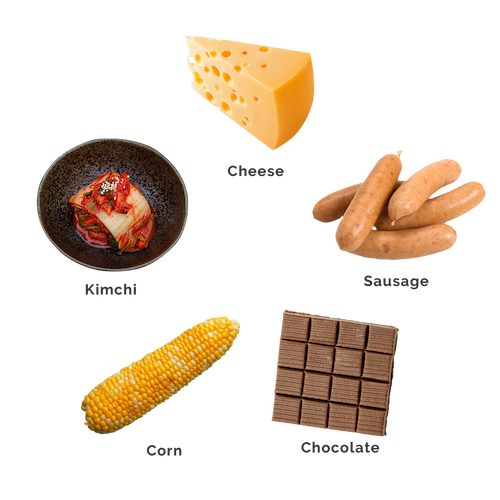
Enjoy using different sauces


YAKISOBA
Yakisoba is Japanese stir fried noodles. Yakisoba is usually fried with sliced pork and vegetables like cabbage and bean sprouts. It is a very popular casual food everyone likes in Japan.
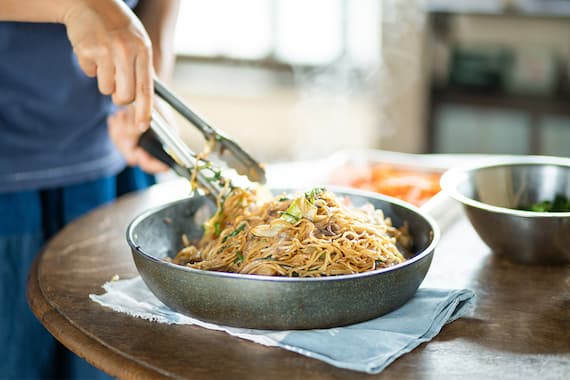
A Classic Japanese Home-Cooked Dish
For many Japanese thinking of lunch on days off instantly evokes Yakisoba. That is how beloved Yakisoba is in Japanese households. In Japan, delicious Yakisoba is easily available in many forms - such as at restaurants, festival stalls, as supermarket side dishes, and cup noodles - as well as cooked at home.
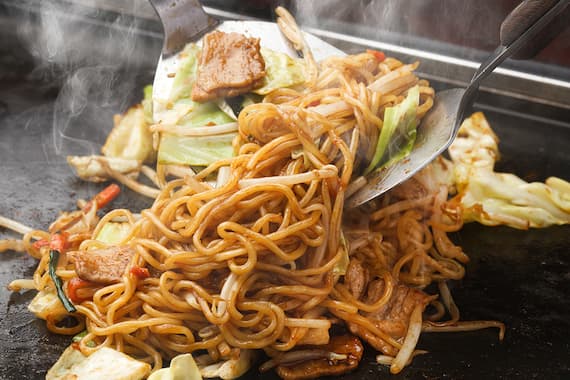
The History of YAKISOBA
It is believed that Yakisoba really started to gain popularity in Japan after the war. From around 1950, the basement dining halls of Japanese department stores were constantly crowded with housewives on their way home from shopping, students heading home from school, and office workers looking for a quick lunch. A popular dish in those dining halls was Yakisoba, made by grilling noodles on a hot plate and featuring the enticing aroma of frying sauce.
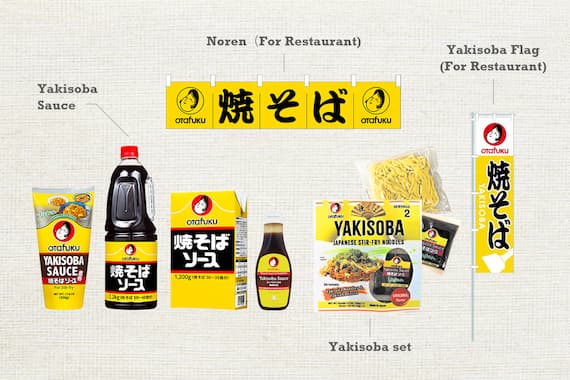
Otafuku Meets YAKISOBA
At Otafuku, we created our first Yakisoba sauce in 1960. It was eight years after we began making Okonomi Sauce. At that time, Yakisoba was made in Hiroshima using Worcestershire sauce only, Okonomi Sauce only, or blending both sauces. However, we received feedback that Worcestershire sauce has too strong spiciness and acidity, and that Okonomi Sauce is a little sticky and a little too sweet, encouraging us to create a sauce tailor-made for Yakisoba. After many years of research and repeated taste testing, the special Otafuku Yakisoba Sauce - featuring full-bodied seasonings and a distinctive savory flavor - was at last perfected in 1960.
Even now, we continue to develop a wide range of products so that people around the world can enjoy the distinctively-Japanese flavor of Yakisoba, wherever they might be.
How to Cook YAKISOBA!!
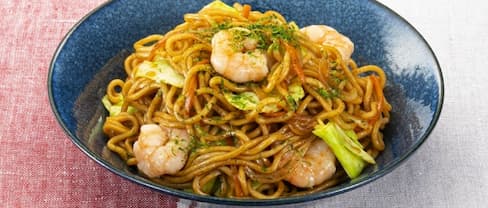
Yakisoba
Tips for making crisp Yakisoba
-
 Point1Stir-fry over medium to high heat!
Point1Stir-fry over medium to high heat! -
 Point2Add the noodles early on and fry them thoroughly!
Point2Add the noodles early on and fry them thoroughly! -
 Point3Fry quickly after adding the Yakisoba Sauce!
Point3Fry quickly after adding the Yakisoba Sauce!
To Take the Flavor to the Next Level
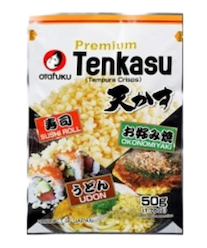
the timing of adding Tempura Crisps is critical!
-
Point1Steam them with the cabbage to enhance the savory flavor!
-
Point2Add them just before the sauce to increase the flavor’s impact!
-
Point3Add them on top of the finished Yakisoba to enjoy the crunchy texture!
Perfect Kit for Trial
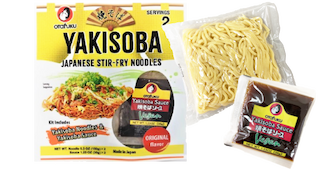
This product provides the noodles and sauce together. To easily make authentic Yakisoba, all you need are the fresh ingredients.
-
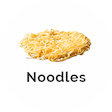
Delicious Yakisoba noodles that are simple to untangle and cook. No egg white is used.
-
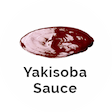
A special Yakisoba Sauce with the sweetness of plenty of fruits and vegetables. Containing no animal products makes it suitable for vegans.

